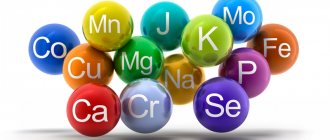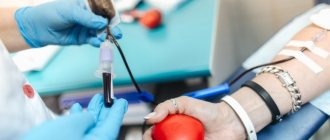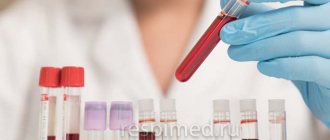Author Andrey Mikhailov
02.07.2021 15:57
Health
Hemoglobin is a blood protein responsible for cellular respiration. It is very important that its level is always within the physiological norm.
What concentration deviations can lead to and how to avoid them will be discussed in our review.
What is hemoglobin and how to determine its level?
One of the primary functions of blood is to supply the body with oxygen and remove carbon dioxide. This task is carried out by red blood cells, cells with a high content of a special protein that is not synthesized anywhere else - hemoglobin.
This large molecule contains iron ions that can bind oxygen. In the lungs, where the oxygen content is high, hemoglobin easily “takes up” molecules of this gas. With the blood flow, red blood cells are transported to the capillaries, where there is no access to free oxygen. There, the fragile bond of oxygen with hemoglobin is broken, the cells receive oxygen, and the red blood cells take up carbon dioxide and carry it along with the venous blood back to the lungs, where the cycle repeats again.
The concentration of hemoglobin in the blood is a very sensitive indicator to malfunctions in the body. That is why assessment of the level of this protein is included in the standard general clinical blood test. It is prescribed for diagnosis, treatment, as well as for preventive examinations.
Treatment
It is not difficult to detect low hemoglobin levels and diagnose anemia. A general blood test is sufficient for this. It is much more difficult to determine the cause or reasons why this occurs in order to prescribe appropriate treatment.
The normal level of hemoglobin is considered to be 135 - 160 g per liter of blood in men and 120 - 140 g per liter of blood in women. When its level is below 100 g/l, moderate anemia is diagnosed, below 80 g/l - severe, below 65 g/l - severe.
To find out the reason for the decrease in hemoglobin levels, a biochemical blood test, tests for iron, and vitamin B12 are performed. Computed tomography and scintigraphy help to detect metastases in the bone marrow. If it is necessary to obtain a comprehensive picture, endoscopic and other instrumental and laboratory examinations are performed.
We will call you back, leave your phone number
Message sent!
expect a call, we will contact you shortly
Transfusion of red blood cells
You can increase hemoglobin in different ways. First of all, influence the cause of anemia. But such treatment can be lengthy, and the amount of time is limited. For example, it may be necessary to quickly increase hemoglobin levels to prepare a patient for surgery.
Therefore, in some cases, a decision is made to symptomatically increase hemoglobin. The fastest and most effective method is red blood cell transfusion. To do this, donor blood is processed in a centrifuge, the content of red blood cells in it increases, and it is transfused to the patient.
Red blood cell transfusion is used not only in preparation for surgery, but also as part of premedication during chemotherapy. This method is used for severe forms of anemia, when you need to quickly increase hemoglobin levels.
Red blood cell transfusion can also be used for recovery after surgery that has caused significant blood loss.
Medical nutrition
At the Medica24 international clinic, we pay great attention to the proper nutrition of patients, especially for cancer patients. The daily diet contains foods rich in proteins, iron, folic acid, vitamin B12, which are necessary for normal hematopoiesis and maintaining hemoglobin levels. For severe gastrointestinal lesions, when the patient cannot eat normally, parenteral nutrition is used.
Drugs
For iron deficiency anemia, we prescribe iron supplements. They can be taken in tablet form, but a more effective route of administration is intravenous, using a drip. Complex preparations containing folic acid, vitamin B12, and intramuscular injections of vitamin B12 are also used.
To stimulate the process of hematopoiesis, erythropoietin preparations, a synthetic analogue of the hormone produced by the kidneys, are prescribed. The question of the use of such drugs is decided individually, since in case of cancer they can negatively affect the patient’s condition and the prognosis of the disease. However, in some cases, it is erythropoietin preparations that serve as an effective means of increasing hemoglobin.
Normal hemoglobin content in blood
What is the normal level of hemoglobin in the blood? The fact is that this indicator is quite dynamic and depends on age, gender and even lifestyle.
The normal level of hemoglobin in the blood in men is 130–160 g/l, in women – 120–150 g/l. Moreover, this value changes with age. In the first days after birth, the hemoglobin level reaches 198 g/l, while in the second month of life the figure drops to 94 g/l. From this age until the age of 12, the concentration of hemoglobin in the child’s blood gradually increases, reaching the adult norm. After 45 years, hemoglobin levels in the blood begin to gradually increase. In people over 65 years of age, we are talking about 117–161 g/l and 126–174 g/l in women and men, respectively.
During pregnancy and lactation, the resources of the female body are directed to the development of first the fetus, and then the baby. Therefore, a low hemoglobin level is normal during this period. Of course, within reasonable limits.
An increase in hemoglobin in the blood is also not always a sign of pathological processes in the body. For example, among professional athletes and climbers, increased hemoglobin in the blood is in a sense normal.
Dosage of donating blood and its components, effect on the donor’s body
Taking blood and its components from a donor is permissible only on condition that the health of the donor will not be harmed.
The effect of blood donation on the donor’s body
The standard volume of blood collection is 450 (±10%) ml, excluding the amount of blood taken for analysis (up to 40 ml). In persons weighing less than 50 kg, the volume of one blood supply should not exceed 12% of the circulating blood volume (CBV), which normally amounts to 6.5-7% of body weight (Order of the Ministry of Health of the Russian Federation No. 364 of September 14, 2001). Each blood loss in a volume of 350-500 ml causes a number of changes in the donor’s body: hemoglobin levels decrease (when taking up to 500 ml of blood, the hemoglobin level within 5 days decreases by 2-10% compared to the original and is restored within a month), the number of erythrocytes from the first hours after blood collection and over the next 5 days by 3-10Χ5/l; complete restoration of the initial red blood parameters is observed by 15-30 days.
According to the type of red blood regeneration, all donors are conventionally divided into 3 groups. In the first group (hyperregenerative type), hemoglobin and red blood cells after blood donation exceed the initial figures; in the second group (regenerative type) these indicators do not change; in the third group (hyporegenerative), the content of hemoglobin and red blood cells decreases under the influence of blood donation. It has been proven that in people who have given blood multiple times, the restoration of peripheral blood parameters occurs faster than in primary donors. This is explained by the “training” of the hematopoietic organs through repeated bloodletting. The reaction to blood collection varies from person to person. It depends on many factors: psycho-emotional state, nutrition, living conditions of donors, physical activity, weather conditions.
The loss of a small volume of blood (up to 500 ml) is accompanied by changes that have a dual origin. Immediately after giving blood or in the next few hours, a so-called stress reaction develops to the situation and the blood collection procedure, depending on the type of nervous system and hormonal characteristics of the donor, and a reaction to the loss of cells and substances contained in the blood. Immediately after taking blood from donors, changes in some hemodynamic parameters are observed: a decrease in venous and blood pressure, acceleration of blood flow, and a slight increase in heart rate. The reaction to blood loss is short-lived; normalization of cardiovascular activity occurs within 30-60 minutes. During this period, donors are advised to rest.
After donation, some donors may experience a slight decrease in muscle strength, as well as an increase in the percentage of errors when solving test mathematical and logical problems. This indicates changes in the regulatory mechanisms of the nervous system, which affects work activity. In this regard, donors whose work is associated with great emotional stress and requires quick and accurate reactions (for example, transport drivers, crane operators, high-altitude workers, etc.) are not recommended to start it immediately after donating blood.
Repeated blood draws have a beneficial effect on the central nervous system, and through it on the metabolic processes of the entire body. In particular, among regular donors there was a significantly lower percentage of people with symptoms of atherosclerosis than among people attracted to donation for the first time.
The influence of the plasmapheresis procedure on the donor’s body
Donor plasmapheresis is a method of obtaining plasma by separating canned donor blood into plasma and cellular components, and then returning them to the donor.
A study of the effect of plasmapheresis on the donor’s body, carried out at the Central, Leningrad and Kirov Scientific Research Institutes of Hearing and Pediatrics, showed that both single and multiple procedures do not significantly affect the morphological composition of the blood, because cellular elements separated from the plasma and returned to the donor after 30-50 minutes retain their biological usefulness and continue to function in the bloodstream, no different from other cells. Plasmapheresis does not have an effect on the functional state of the liver of donors, as can be judged by the absence of noticeable changes in the protein-forming function of the liver, its enzymatic activity, as well as hepatic blood coagulation factors.
It was found that half of the donors after plasmapheresis experience a short-term decrease in total protein, associated with the redistribution of plasma and tissue proteins, but not with a violation of their synthesis in the liver. After 16-18 hours, with sufficient protein content in the donor’s food, the protein formula of the blood is normalized. This circumstance made it possible to regulate short intervals (7-14 days) between plasmapheresis for plasma donors. The conducted studies confirmed the safety of the plasmapheresis procedure and the feasibility of widespread use of this method to increase the supply of donor plasma in a volume of up to 12 liters. from one donor for a year.
After plasmapheresis, the donor’s condition is satisfactory; reactions are observed extremely rarely, and are usually associated with insufficient preparation of the donor for the procedure (on an empty stomach, sleep disturbance, overwork, etc.).
Intermittent and automatic plasmapheresis is carried out in accordance with the instructions of the Russian Ministry of Health. The maximum volume of plasma donation in Russia is set at 600 ml.
Increased hemoglobin in the blood
In the absence of serious physical activity, a high level of hemoglobin indicates the presence of diseases, for example,
- diabetes
- or the development of tumors.
In addition, the condition poses a threat in itself. The blood becomes thicker, which means the risk of blood clots increases. This can lead to the development of a heart attack or stroke.
Diet for high hemoglobin
To reduce risks, doctors, in addition to basic therapy, recommend excluding red meat and other foods rich in iron and fats from the diet.
In addition to diet, in case of persistently elevated levels of hemoglobin in the blood, blood thinning medications may be prescribed, as well as the procedure of erythrocytepheresis - partial purification of the blood from red blood cells.
Norm of glycosylated hemoglobin, table
| Amount of glycosylated hemoglobin in blood, % | Interpretation of the result |
| 5.6 or less | Norm of glycated hemoglobin |
| from 5.7 to 6.0 | Increased likelihood of developing diabetes |
| from 6.1 to 6.4 | Very high risk of developing diabetes |
| 6.5 or more | Diabetes |
An analysis for glycated hemoglobin can be taken at any time of the day, on an empty stomach or after a meal, after stress or after physical strain, since the listed factors will not affect the objectivity of the result.
Reduced hemoglobin in the blood
Conditions when hemoglobin in the blood is low are much more common. The most common cause is a lack of iron in the body.
According to WHO, more than 30% of the world's population suffers from iron deficiency. The condition is provoked primarily by unbalanced nutrition,
- low in iron
- and vitamins B9 and B12 necessary for its absorption.
Low hemoglobin can also be a consequence of blood loss, infectious and autoimmune diseases.
Anemia
A condition when the hemoglobin content in the blood decreases is called anemia.
The degree of its severity is determined by the severity of the decrease in hemoglobin concentration in the patient’s blood. Mild anemia often resolves without symptoms and is accompanied by levels of 90–110 g/l. A further decrease in blood hemoglobin content (70–90 g/l), as a rule, leads to a deterioration in health. Weakness develops, concentration decreases, the person looks pale and tired. In this case we are talking about moderate anemia. When the hemoglobin concentration is below 70 g/l, a diagnosis of “severe anemia” is made. Among other things, it has
- brittle nails,
- “jams” in the corners of the lips,
- decreased immunity.
Decreased hemoglobin: causes and symptoms
Hemoglobin may decrease for the following reasons:
- unbalanced diet, which consists of a deficiency in the daily diet of foods containing iron;
- mono-diets;
- starvation;
- vitamin deficiencies C and B12, which are caused by helminthiasis and unbalanced nutrition;
- bleeding and large blood loss during menstruation;
- hypofunction of the thyroid gland;
- diseases of the digestive system, which lead to inability to absorb iron and vitamins;
- diseases of an infectious nature that accelerate the destruction of red blood cells (hepatitis, tuberculosis and others);
- autoimmune diseases that also contribute to the death of red blood cells (rheumatism, systemic lupus erythematosus and others) and others.
A decrease in the amount of hemoglobin in the blood is called anemia or anemia in medicine.
Symptoms of anemia:
- pallor of the skin and mucous membranes;
- dry skin;
- brittleness of hair and nails;
- angular stomatitis (cracks in the corners of the lips);
- headache;
- noise in ears;
- dizziness;
- general weakness;
- fast fatiguability;
- decreased ability to work;
- tachycardia;
- insomnia;
- dyspnea;
- caries;
- yellowing of tooth enamel;
- coating on the tongue;
- smoothing of papillae on the tongue and others.
Now we can summarize the above. Hemoglobin is the most important blood marker not only in women, but also in men. By its level in the blood one can judge the presence of both physiological conditions and various diseases. To monitor this indicator, a healthy person is recommended to undergo a general blood test twice a year.










